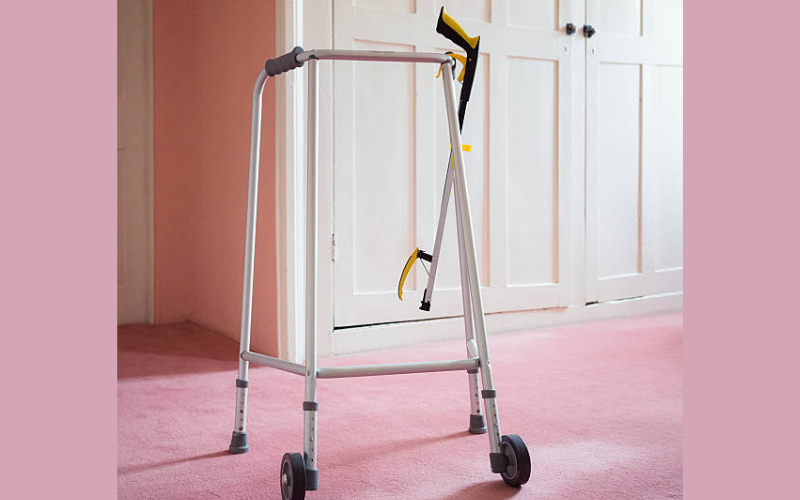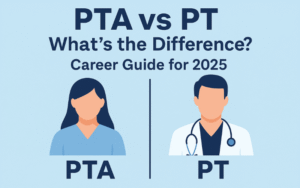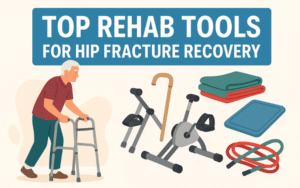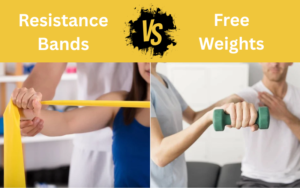Living with weak bones can make daily tasks harder—and riskier. The right assistive devices for osteoporosis can help you stay safe, mobile, and independent.
In this post, we’ll share top tools like walkers, canes, and grab bars that support balance and prevent falls. Let’s explore how these simple devices can make a big difference.
Table of Contents
🚨 Looking for an exercise plan for your Osteoporosis? Check out our Stronger Bones: The Best Exercises for Osteoporosis You Need to Try to build stronger bones today!
🏁 Introduction: What is Osteoporosis
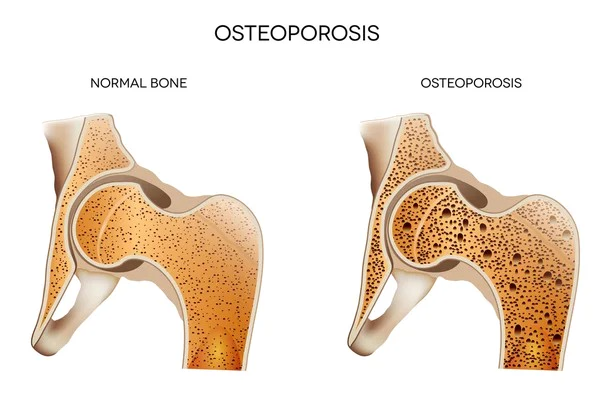
Osteoporosis is a condition that causes bones to become thin, weak, and more likely to break. It often develops silently over time and is most common in older adults—especially women after menopause. Even a small slip or bump can lead to a serious fracture.
That’s why using the right assistive devices for osteoporosis is so important. These tools can help you stay safe, steady, and independent in your daily life.
From walking aids to home safety tools, these devices are designed to support your body and reduce the chance of injury. In this post, we’ll show you the best options to help you move with more confidence—whether you’re at home or on the go.
❓ Why Assistive Devices Are Important for Osteoporosis
Osteoporosis weakens your bones, making them more likely to break—especially in the hips, spine, and wrists. In fact, 1 in 2 women and 1 in 4 men over age 50 will break a bone due to osteoporosis. Many of these fractures happen during simple, everyday tasks like walking or reaching for something.
So how can you reduce your risk?
Using assistive devices for osteoporosis is one of the best ways to stay safe and independent. These tools are designed to help you:
- ✔️Stay Balanced: Devices like walkers and canes offer extra support while walking, especially on uneven surfaces.
- ✔️Prevent Falls: Grab bars, non-slip mats, and shower chairs reduce your chance of slipping in high-risk areas like the bathroom.
- ✔️Avoid Unnecessary Strain: Tools like reachers and dressing aids help you avoid bending, twisting, or overreaching—moves that could cause a fracture.
- ✔️Stay Active Safely: When you feel stable, you’re more likely to keep moving. Light daily activity helps keep your muscles and bones strong.
Why does this matter?
Falls are the leading cause of injury in people with osteoporosis. A single fall can lead to months of recovery—or even permanent loss of mobility. The right assistive devices not only reduce the risk of injury but also help you maintain your confidence and quality of life.
📊 Fracture Risk: With vs. Without Assistive Devices for Osteoporosis
| Situation | Fracture Risk Without Devices | Fracture Risk With Devices |
|---|---|---|
| Walking on uneven ground | High | Low to moderate |
| Getting in/out of a chair or bed | Moderate | Low |
| Using the bathroom (shower/toilet) | High | Low |
| Picking up objects from the floor | Moderate to high | Low |
| Climbing stairs | High | Moderate |
| General daily activities (at home) | Moderate | Low |
🏆 Types of Assistive Devices for Osteoporosis
There are many types of assistive devices for osteoporosis, each designed to meet different needs. Some help you walk safely. Others make it easier to move around your home or perform simple tasks without hurting yourself. Below are the most helpful categories, with real examples you can use daily.
1. Walking Aids
These devices give extra support when walking and reduce your risk of falling.
- Canes – Best for people with mild balance problems. Choose a cane with a wide, rubber base for grip and stability. Some canes have foldable designs for easy travel.
- Walkers – Provide more support than canes. A basic walker has four legs and no wheels. It’s ideal for indoor use and people who need strong support while walking.
- Rollators – These are walkers with wheels and hand brakes. They often include a seat and storage basket. Rollators are great for people who need balance help and also want to rest during longer walks.
2. Home Safety Tools
Your home can be full of hidden dangers, especially in the bathroom and kitchen. These tools help make your space safer.
- Grab Bars – Install these near the toilet, in the shower, or beside stairs. They help you stand up and keep your balance.
- Raised Toilet Seats – Raise the height of your toilet to reduce pressure on your hips and knees. Easier to sit and stand without pain.
- Shower Chairs – Sit safely while showering. Look for non-slip feet and adjustable legs. Some include back support for added comfort.
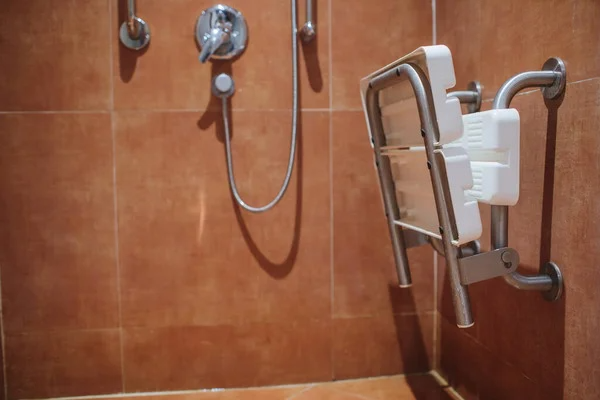
3. Daily Living Aids
These tools help you stay independent while protecting your spine and joints.
- Reachers or Grabbers – Pick up items from the floor or shelves without bending or twisting.
- Sock Aids and Shoehorns – Help you get dressed without leaning over. Useful for people with limited flexibility or back pain.
- Non-Slip Mats – Place in the shower, bathtub, or kitchen. They reduce the risk of slipping on wet floors.
4. Fall Detection and Alert Devices
Sometimes, even with caution, a fall may happen. These tools make sure you get help fast.
- Wearable Alert Systems – These include medical alert necklaces or smartwatches. Some have automatic fall detection that calls for help if you can’t.
- Voice-Activated Devices – Allow you to call for help just by speaking. Useful if you can’t reach a phone.
✅ Quick Summary Tip Box
🟢 Walking Aids = Stability on the go
🟢 Home Safety Tools = Fall prevention at home
🟢 Daily Living Aids = Less strain, more comfort
🟢 Alert Devices = Peace of mind in emergencies
⚖️ How to Choose the Right Assistive Device
With so many assistive devices for osteoporosis available, how do you know which one is best for you or a loved one? The right choice depends on your needs, your lifestyle, and your home setup. Here are key things to consider before buying or using any device.
Understand Your Needs
Start by asking:
- Do you need help with walking, balance, or both?
- Are you having trouble with daily tasks like bathing, dressing, or reaching?
- Have you had a fall recently, or are you afraid of falling?
💡Your answers will help you focus on the right type of device—such as a walker, grab bar, or dressing tool.
🛠️ Assistive Devices for Osteoporosis: What They Help With & Why It Matters
| Device | What It Helps With | Why It Matters |
|---|---|---|
| Cane | Balance while walking | Reduces risk of falls and fractures |
| Walker | Full body support while walking | Provides more stability than a cane |
| Rollator | Walking longer distances | Has wheels and seat for rest when needed |
| Reacher | Picking up items from floor/high shelves | Prevents bending and straining the spine |
| Grab Bars | Getting up from toilet or shower | Helps avoid slips in high-risk areas |
| Sock Aid | Putting on socks independently | Prevents twisting or bending |
| Shower Chair | Sitting while bathing | Lowers fall risk in the bathroom |
| Raised Toilet Seat | Easier sitting and standing | Reduces knee and hip strain |
Talk to a Professional
A physical therapist, occupational therapist, or doctor can assess your movement, strength, and risk of falling. They can recommend the best assistive devices for osteoporosis based on your body and your daily routine.
This step is especially helpful if:
- You’re unsure which device offers enough support.
- You have other conditions (like arthritis or vision problems).
- You need help using the device correctly.
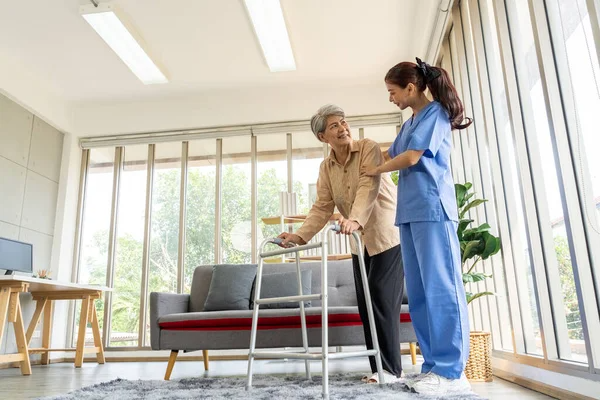
Look for Key Features
The best devices are easy to use, safe, and built for comfort. Here’s what to look for:
- Adjustability: Choose devices with adjustable height or settings to fit your body size.
- Lightweight Materials: Look for aluminum or other light materials that are easy to move.
- Non-Slip Grips or Feet: Prevent slips and provide secure support.
- Foldable or Compact Designs: For easy storage or travel (especially walkers and canes).
✅ Quick Tip Box:
“Test the device at home or in-store before buying. Make sure it feels stable and fits your height.”
Consider Your Home Layout
Think about where you’ll use the device:
- Is there enough space for a walker or rollator to turn easily?
- Do you need extra safety features in the bathroom?
- Are floors slippery or cluttered?
💡A simple change—like adding grab bars in the shower or non-slip mats in the kitchen—can make a big difference.
Plan for Long-Term Use
Choose a device that will support you now and in the future. If your balance or strength may get worse over time, it’s smart to choose a more stable option now (such as a walker instead of a cane).
🛠️ Top Assistive Devices for Osteoporosis
Now that you know how assistive devices for osteoporosis help improve safety and independence, let’s look at some top-rated products. These are trusted by physical therapists, easy to use, and ideal for daily support at home or on the go.
✅ Note: Always speak with your doctor or therapist before using a new device—especially after a recent fracture or fall.
1. Best Cane for Stability
HurryCane Freedom Edition Folding Cane
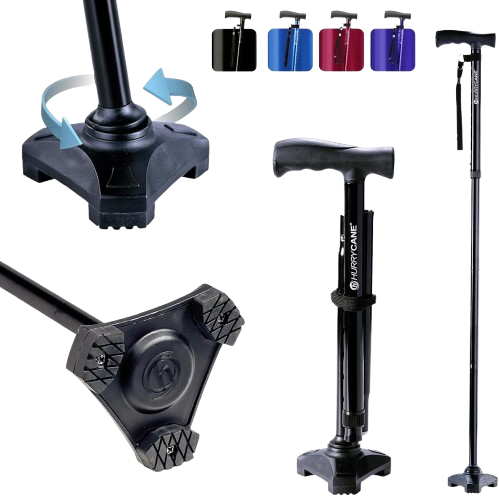
- Why It’s Great: Foldable, lightweight, and stands on its own. Great for balance support while walking.
- Key Features: Pivoting base, adjustable height, slip-resistant tip.
- Best For: Mild balance issues or walking short distances.
🛒Click here to see it on Amazon ➜ HurryCane Freedom Edition Folding Cane
2. Best Walker for Full Support
Drive Medical Nitro Euro-Style Rollator Walker
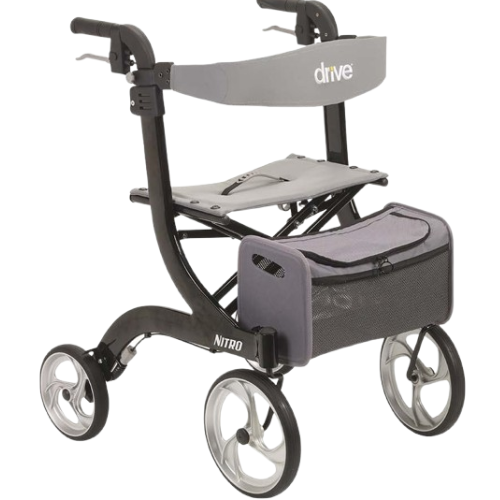
- Why It’s Great: Easy to maneuver, comes with a seat and storage.
- Key Features: Large wheels for indoor/outdoor use, foldable frame, hand brakes.
- Best For: Moderate to severe balance issues or long walks with rest breaks.
🛒Click here to see it on Amazon ➜ Drive Medical Nitro Euro-Style Rollator Walker
3. Best Grab Bars for Bathroom Safety
Moen Home Care 24-Inch Grab Bar
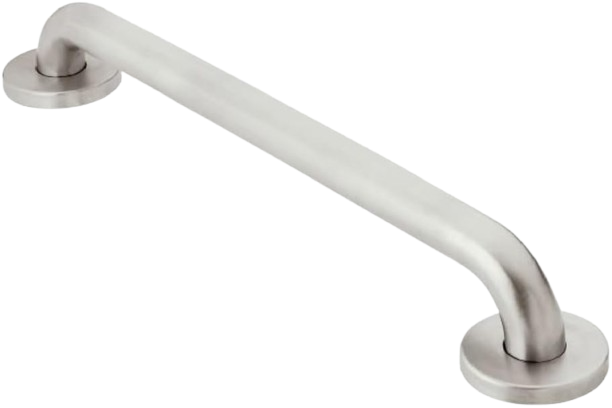
- Why It’s Great: Secure, rust-proof, and easy to install near showers or toilets.
- Key Features: Stainless steel, supports up to 500 lbs.
- Best For: Preventing slips in wet areas like bathrooms.
🛒Click here to see it on Amazon ➜ Moen Home Care 24-Inch Grab Bar
4. Best Reacher for Easy Daily Tasks
Vive Reacher Grabber Tool (32-Inch)
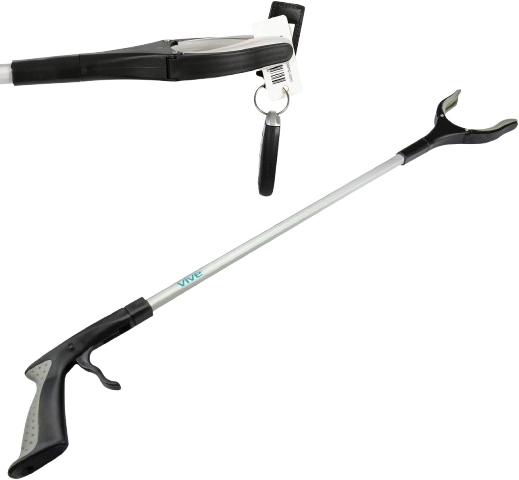
- Why It’s Great: Helps you pick up items without bending.
- Key Features: Lightweight, strong grip, rotating head.
- Best For: People with limited flexibility or spinal issues.
🛒Click here to see it on Amazon ➜ Vive Reacher Grabber Tool (32-Inch)
5. Best Fall Alert System
Medical Guardian MGMove Smartwatch
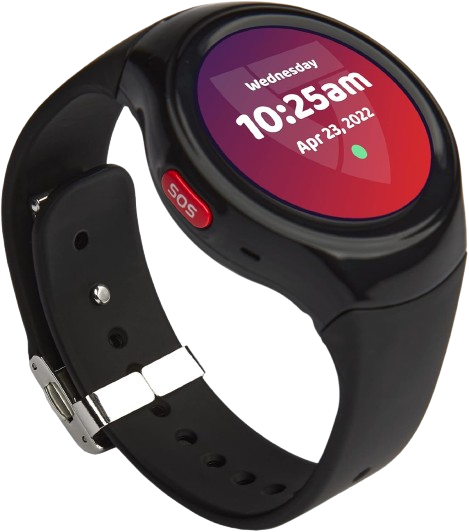
- Why It’s Great: Offers GPS tracking, fall detection, and emergency calls.
- Key Features: Wearable, waterproof, voice command.
- Best For: Seniors who live alone or have a history of falls.
🛒Click here to see it on Amazon ➜ Medical Guardian MGMove Smartwatch
🛒 Pro Tip for Shopping
Look for devices that:
- Have strong customer reviews (4+ stars)
- Offer easy returns or warranties
- Come with clear setup instructions or video demos
💡 Tips for Using Assistive Devices Safely
Using assistive devices for osteoporosis can keep you safe—but only if you use them correctly. Follow these simple tips:
- Get the Right Fit
Make sure canes, walkers, and grab bars fit your height and reach. - Check Your Devices Often
Look for worn tips, loose parts, or broken brakes. Fix or replace them fast. - Keep Your Hands Free
Use a bag or walker basket to carry items—don’t hold things in your hands while walking. - Practice at Home
Try your device indoors first. Walk on flat floors and use grab bars to build confidence. - Wear Good Shoes
Choose non-slip, supportive shoes to help balance and protect your bones. - Clear Your Path
Remove rugs, clutter, and cords. Use night lights in dark areas.
💡Tip: Ask someone to watch you use your device. They can help you stay safe and comfortable.
✅ Conclusion
Choosing and using the right assistive devices for osteoporosis can make a huge difference in your safety, mobility, and independence. Remember these key points:
- ✔️Know your needs — Pick devices that match your balance, strength, and daily tasks.
- ✔️Use devices safely — Practice at home, keep devices in good shape, and wear proper footwear.
- ✔️Replace or upgrade — Don’t wait for a fall; update your devices when they wear out or your needs change.
💡Taking action now helps prevent injuries and keeps you moving with confidence.
📢 Ready to Improve Your Life?
Start by assessing your current needs or talk to a healthcare professional about the best assistive devices for osteoporosis for you. Stay safe, stay active, and keep your independence strong!


